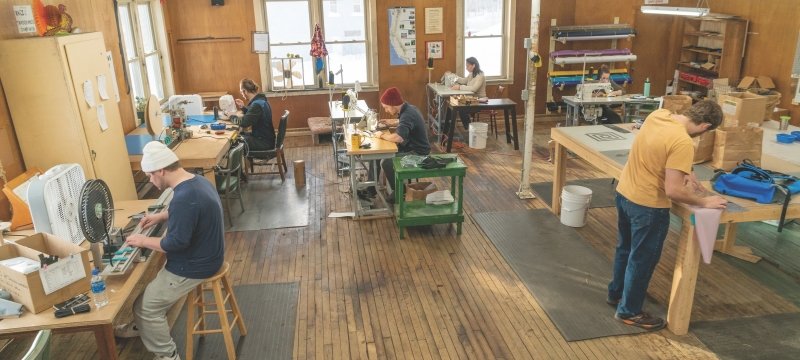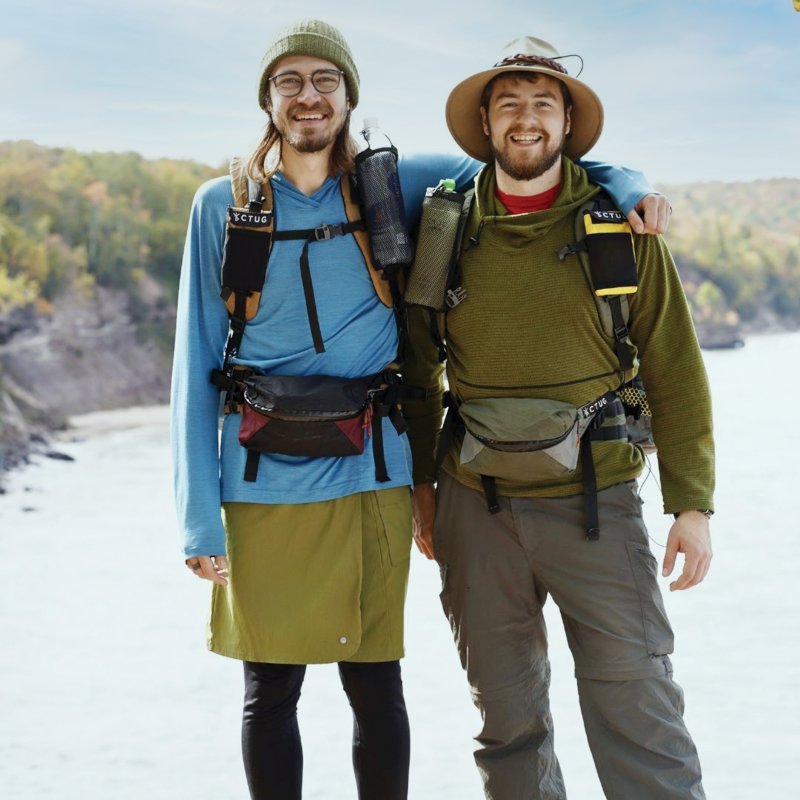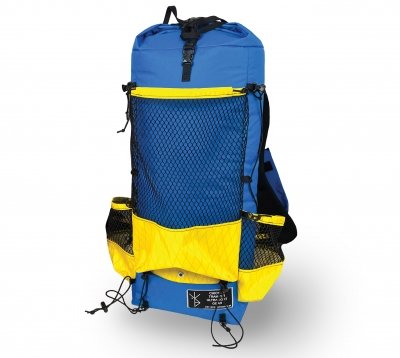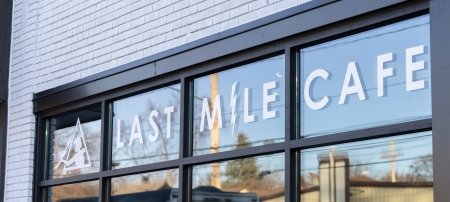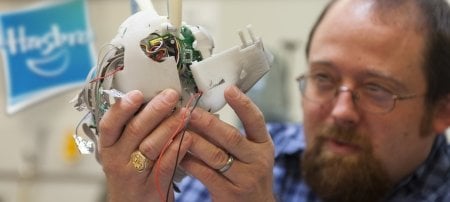Two alums are putting lessons learned at Tech to use in life and business, crafting high-quality, lightweight gear for their fellow long-distance backpackers.
Like most successful small businesses, Chicken Tramper Ultralight Gear began with a problem.
A few months before graduating from Michigan Tech with a mechanical engineering degree, Austin Gongos '18 was assembling his gear for a thru-hike on the Pacific Crest Trail (PCT). The daunting trek stretches 2,650 miles along the highest portions of the Sierra Nevada and Cascade mountain ranges, from Campo, California, near the US/Mexico border to Monument 78 along the US/Canada border in Washington State.
Completing the PCT requires a unique mixture of ambition, stamina, and lightweight gear. Gongos's problem was his backpack. The one he had weighed over four pounds, an unnecessarily heavy load for an expedition on which every ounce would matter. The ultralight packs available—which weighed under two pounds—were too expensive and not made to last.
So, Gongos trusted his own ingenuity and decided to fabricate his own.
"I had only sewn one straight line in my life," said Gongos. "Now I was trying to source materials and to make a custom ultralight backpack. Nathan gave me the idea to use carbon fiber arrow shafts for the frame."
Nathan Ackerman '18, who was planning on joining Gongos for a portion of the hike, was one of Gongos's Phi Kappa Tau fraternity brothers. The two shared a love of hiking and the outdoors. They had become good friends working together on Phi Kappa's renowned Winter Carnival snow statues.
Both Gongos and Ackerman ended up sewing their own backpacks, borrowing ideas from each other and learning sewing techniques from web forums dedicated to hikers making their own gear. They designed their packs to fit their individual body sizes and customized them according to how they each preferred to pack their bags and hike. Trial and error led to their first prototypes. Then it was time to put their bags to the test on the PCT.
"Austin left campus before commencement so he could get started on the hike," said Ackerman. "I joined him later for four or five weeks, but had to return to start my job at Milwaukee Tool."
The common language of hikers on the trail is gear talk. Ackerman said he and Gongos received many compliments from other hikers on their homemade gear, while hearing complaints from the same hikers about their own heavy, unreliable packs. "It seemed like there was a hole in the market for durable, ultralight bags that had certain features," Ackerman said.
While Gongos was still on the trail, Ackerman began work in Milwaukee and started exploring the feasibility of starting a brand of outdoor gear. After finishing the hike, Gongos moved into Ackerman's apartment and set to work producing more bags. Thus, Chicken Tramper Ultralight Gear, or CTUG, was born.
"Tramper comes from the group chat we had with our trail family on the PCT hike," said Gongos. "It's a word used in New Zealand as a synonym for backpacking."
"Chicken comes from an older fraternity member, Dan Lorenz, who started using the international symbol for chicken around the Phi Kappa Tau house starting in the '80s," Ackerman added. "It's still used today, and we've incorporated it into our logo."
To get the CTUG brand up and tramping, they offered discounts to anyone hiking more than 2,000 miles in a year in exchange for their feedback, which was used to improve design. Ackerman's hunch about a niche in the market soon proved correct. In 2019, he quit his job at Milwaukee Tool to work full-time building the CTUG business. He and Gongos returned to the Keweenaw, relocating to Hancock one block north of Quincy Street.
"This place seemed so big when we first started," said Gongos. "Now it's getting full, and we probably need to reorganize to better use the space."
CTUG now has nine employees working at their Hancock headquarters, doing everything from sewing and stitching to product design and marketing. Every item CTUG makes is designed to be modular, durable, and lightweight. In addition to popular items like fanny packs and water bottle holders, they also still produce custom full-sized backpacking bags to match their clients' body sizes, shapes, and preferences.
"This is a dream job for me," said Gongos. "We're our own bosses with a great team, we have a flexible schedule, we get to live in Hancock and make things with our hands."
Both Ackerman and Gongos credit Michigan Tech with preparing them for this opportunity.
"There's a lot I learned at Tech that's directly applicable," said Ackerman. "All our products are drawn in CAD software. I've been able to create special jigs to improve efficiency, make things with a 3D printer, and just to generally fix things. We're also both wearing about 25 different hats right now, so learning how to prioritize and juggle everything feels a lot like being in school."
They also use lessons learned while working on Phi Kappa Tau's snow statues. "There are many parts of a good snow statue," said Gongos. "Nate and I were on the intricate design team, and we had to figure out how to make our design work with other members of the team. That's kind of what we've done here: figured it out along the way."
What's next on the Chicken Tramper journey? Gongos and Ackerman want to improve efficiency in CTUG's processes and acquire more retailers to carry their products.
"The ultimate dream is to spend more time hiking and testing our gear," said Gongos. "We love being outdoors and we love solving problems for backpackers. We just want to continue doing both of those things."
Michigan Technological University is a public research university founded in 1885 in Houghton, Michigan, and is home to more than 7,000 students from 55 countries around the world. Consistently ranked among the best universities in the country for return on investment, Michigan’s flagship technological university offers more than 120 undergraduate and graduate degree programs in science and technology, engineering, computing, forestry, business and economics, health professions, humanities, mathematics, social sciences, and the arts. The rural campus is situated just miles from Lake Superior in Michigan's Upper Peninsula, offering year-round opportunities for outdoor adventure.
